
A lot can be learned about a culture by examining its clothing and architecture. The relationship between the two is symbiotic. Both are constructive and decorative at the same time. Both are vessels for human forms, and as such, they are measured on a human scale. Personal belongings, such as furniture and clothing, create identity and community and demonstrate social and economic status.
The ways in which we perceive design trends is almost entirely dictated by social constructs. Think about last decade’s trends – you would never wear that "hideous" blouse today, but at the time of purchase it seemed so chic. These trends are largely dictated by beauty standards, technological developments, religion, major historical events, the economy, and war.
The Greeks distinguished themselves from other nations by their clothing. For example, sleeves and pants were unacceptable - that was only for barbaric nations. Clothes in ancient Greece were homemade - woven on a loom, using wool, cotton, linen, and silk for the rich.
The ancient Greeks admired the human form, and this is reflected well in their clothing, as most of it required minimal sewing. What gives the garment its shape is the body, not the seams. Many of their clothes were draped over the body and attached at the shoulders with decorative brooches or tied around the torso with ropes.
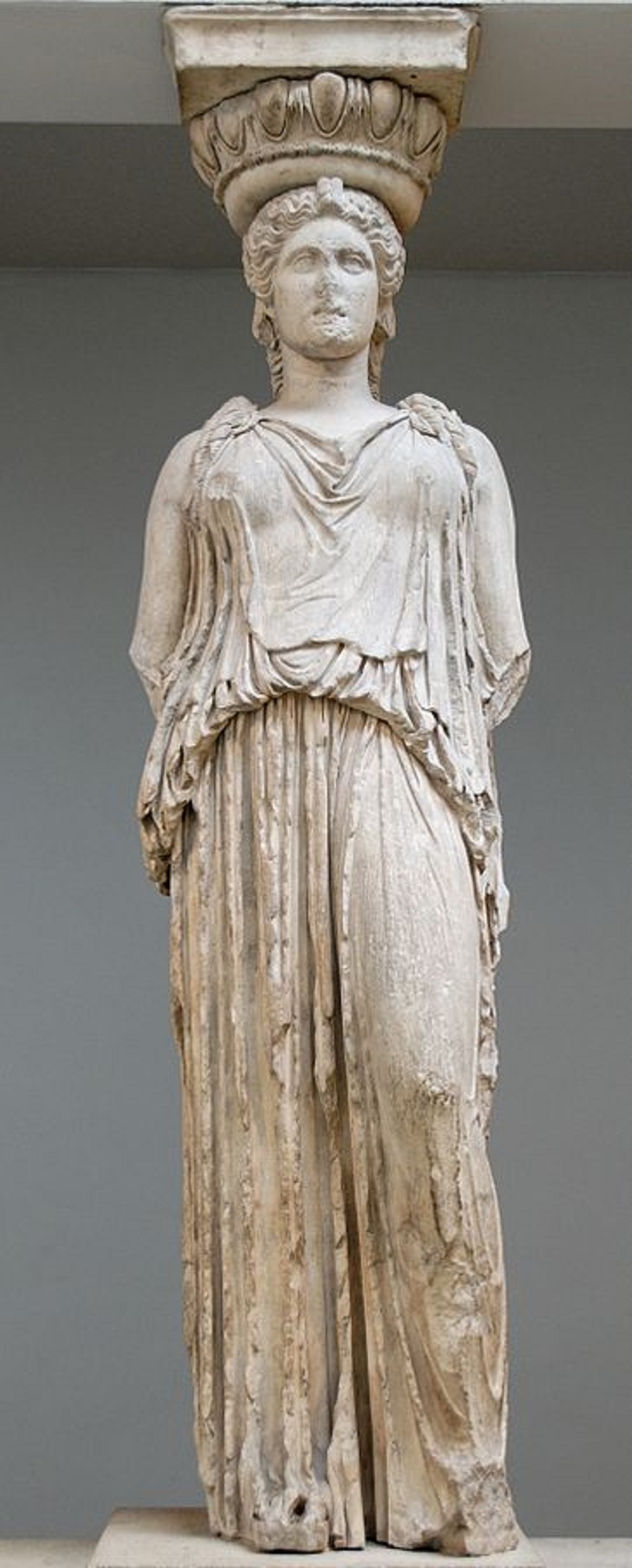 A statue wearing the classic chiton/Source
A statue wearing the classic chiton/Source
The base layer was a tunic called a chiton. This was worn by both men and women of all ages with one key difference - the women wore an ankle-length tunic, while the men’s tunic was knee-length.
Did you know? Unlike what many assume, clothes in Ancient Greece were dyed! The most used colors were light greens, blues, yellows, and purples, as well as earth tones, dark reds, and dark purples.
As far as footwear was concerned, there were mainly sandals and boots with air holes. The soles were made of wood for the poor or leather for the rich. Shoemakers would make small embossed logos on the soles of the shoes, so that they would leave marks around town. This was a highly effective method of advertising because, as you’re about to see, life in ancient Greece was highly communal, and many affairs were public.
Public architecture in ancient Greece was monumental. It played an important role in the daily lives of all citizens, as Greek politics were based on direct democracy, in which every citizen had a say and a role in matters and politics.
Public buildings were made of stone and marble, which is why they survive to this day. Classical Greek architecture emphasizes how things look from the outside - a refined surface has a profound public impact. Did you know? The gigantic columns in Greek architecture were not carved as a single unit! Instead, they were made of slices stacked on one another, as you can see in this photo of a temple of Poseidon in central Greece:
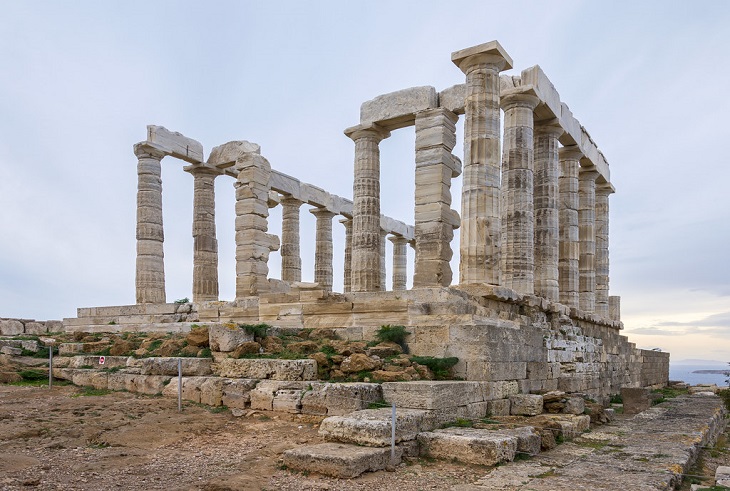 Source
Source
Click here to watch a video demonstrating the methods of an ancient Greek construction site.
The guiding principles of Classic Greek public architecture are balance and proportion. These proportions were based on the human body. Did you know? Ancient Greece introduced the foot as a measure of distance. Archeological excavations found a stone inscribed with a human foot and an arm. That stone was utilized by construction workers to make measurements on-site.
A direct opposite of public architecture (which was concerned with the outside), the private home in ancient Greece was centered on the inside. Building materials were field stones, wood, and mud, so the majority of buildings did not survive to the present day. Only the rich could afford to build in stone, while the poor lived in communal buildings.
As mentioned above, ancient Greek culture was very much public-oriented and community-based. The domestic home played a negligible role in culture, as demonstrated in the video below.
The general shape of the home was closed in and centered on an open courtyard to provide shade from the sun. There were almost no windows looking out. There were no doors in ancient Greek homes. There were, however, hooks to hang curtains for privacy. Flooring varied according to room significance, but it was mostly pressed soil, either plain or decorated with pebbles. Formal hosting rooms had mosaic floors.
The entrance to an ancient Greek home was very modest. There was usually a statue of Apollo, the governing god of the streets. The entrance led directly to the courtyard, where every home had a shrine.
The courtyard was surrounded by pillars and an angled roof designed to collect rainwater. This was the beating heart of the home, and as such, it was highly manicured and well tended to. The Greeks would grow flowers and herbs.
Right next to the entrance was the Andron, the men's quarters. This room had an entry from the street and was dedicated to hosting. Deeper into the house, or on the second floor, there was the Gynaikon- the women’s wing. This is where women and children would spend time together or do household chores. Men from outside the family were not allowed here.
Across the courtyard, there was the dining room. This was considered a formal hosting room with decorated walls.
As the decades passed by and society grew prosperous, the domestic building became more lavish, and more homes had fully floored courtyards with intricate mosaics in earthy tones. A kitchen and a washroom were added to the Greek home, employing the use of bathing tools. Starting in the third century BC and onwards, homes had windows: the rich had glass windows, while the poor had oiled fabric or lambskin windows. There was greater attention to decorative details. The most popular ornamental details were the meander and the anthemion.
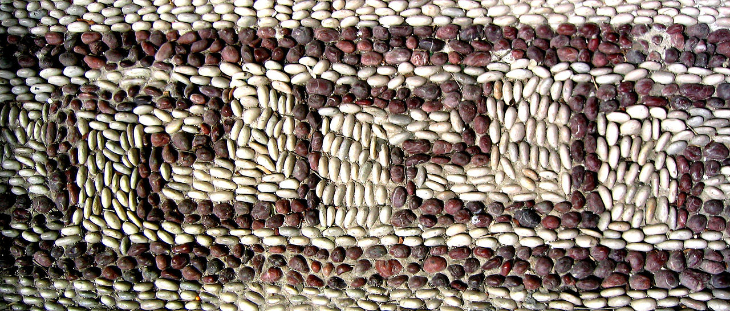 Meander in pebble flooring/Source
Meander in pebble flooring/Source
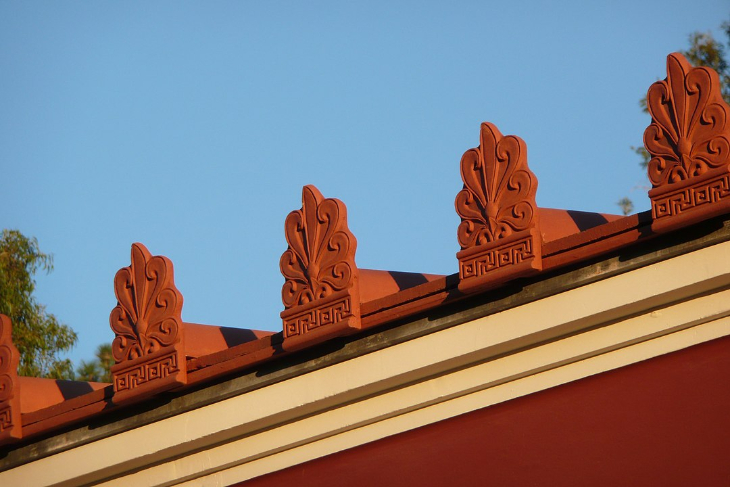 Anthemion/Source
Anthemion/Source
Now that you know all about it in theory, we invite you to take a carefully illustrated video tour of an Ancient Greek home:
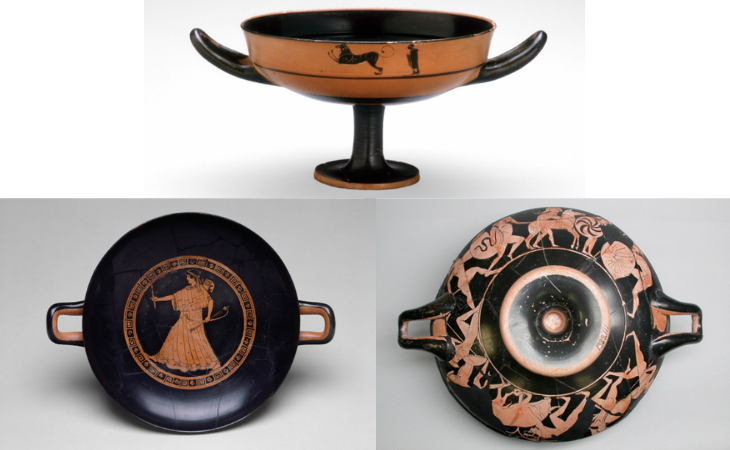
The Roman empire conquered the Greeks, but they were highly fascinated by Greek culture. Much of what we know today about ancient Greece is thanks to the Romans, who worked hard to honor and preserve classical Greek culture. But the Romans weren’t afraid of adapting the Greek home to match their culture.
The ancient Romans were much less restrained and flamboyant compared to the Greeks. Their empire was run not as a direct democracy but as a republic with clear social statuses. There were the patricians - the aristocratic circles that owned land and ran the republic, and the plebeians - the common people.
The different statuses were clearly shown through clothing. Unlike the Greeks, the Romans employed sewing techniques in their clothes. Similarly to the Greeks, they all wore the same base tunic - from slaves to patricians. The men wore shorter tunics than the women. Those with a social status had stripes on their tunic, called clavi. These were markers of status.
Did you know? Togas were for men only! And they were entirely draped over the body – not a single stitch, brooch, or rope was required to give it shape. There was, however, a set of tiny weights sewn into the bottom to keep it from falling off.
Togas were expensive, and at the height of their popularity, a toga required a whopping 7 m (23 ft) of fabric! They were shaped like a half circle and were so cumbersome they required a servant’s assistant to put on.
Compared to Greek homes, the Roman city home called a domus was more elaborate. The Romans added a long entrance hall, the vestibulum, leading to an atrium with a pool to collect rainwater. They also added a study, a dining room, and a kitchen called a culina. The bedrooms featured curved ceilings. If you're curious about more, click here to watch another impressively accurate 3D animation tour of another Roman doums.
As you can see, there is a tight link between fashion, interior design, and culture - one reflects the other. There is an endless fountain of information. If you liked this article, you might also enjoy these two articles: